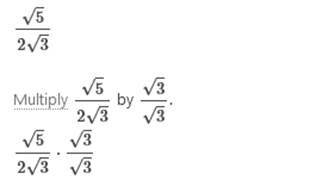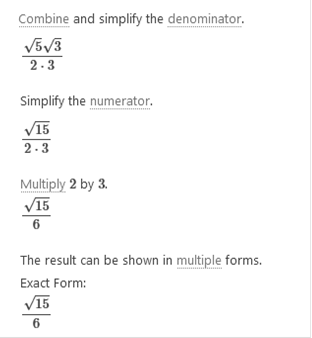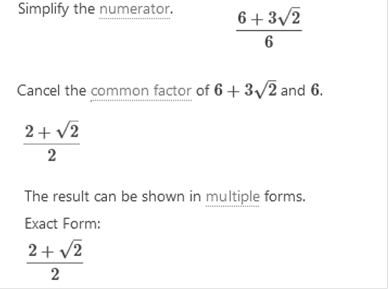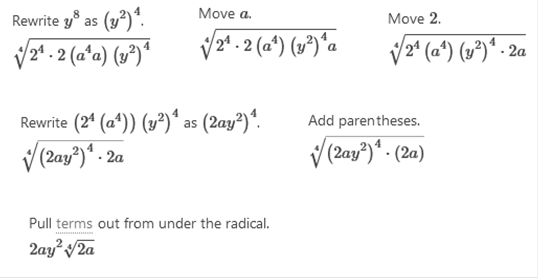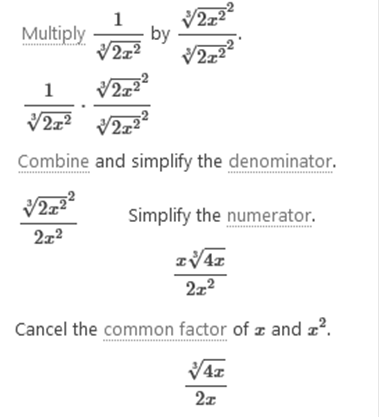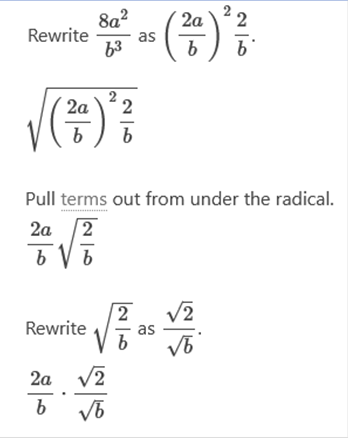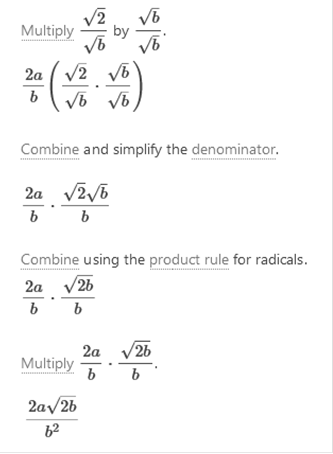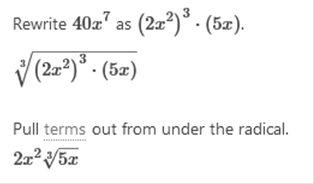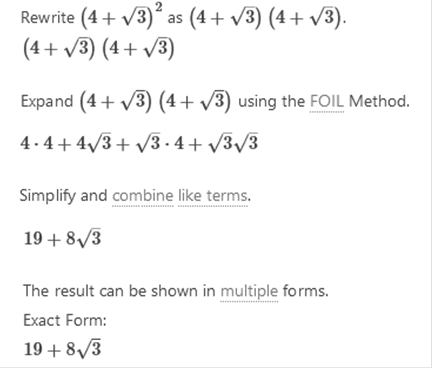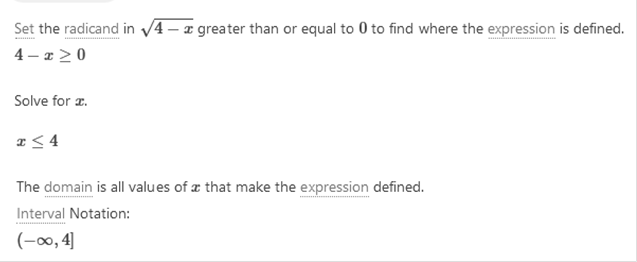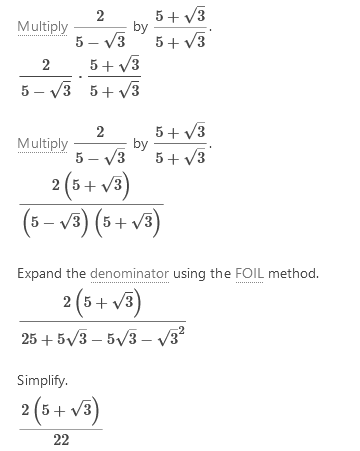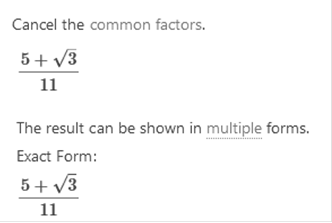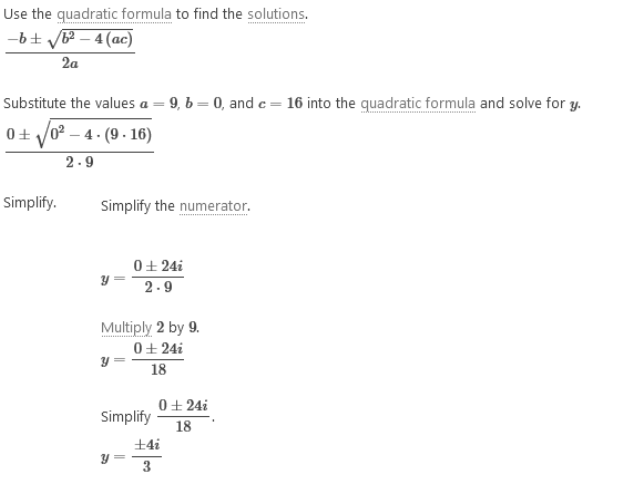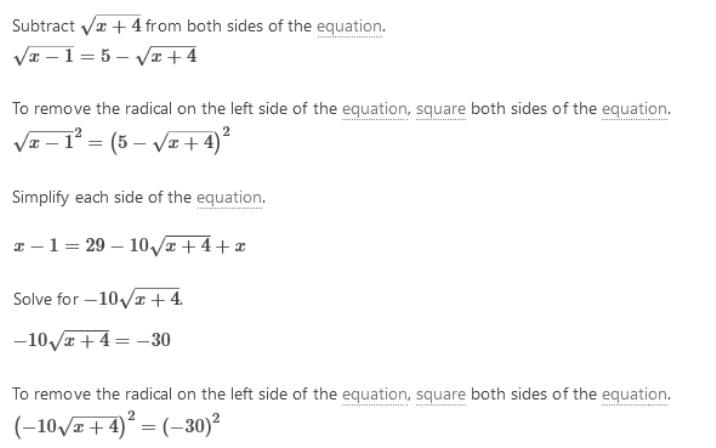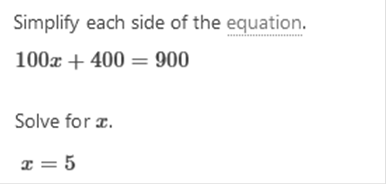|
Accounting | Business | Computer Science | General Studies | Math | Sciences | Civics Exam | Help/Support | Join/Cancel | Contact Us | Login/Log Out Intermediate
Algebra Chapter 1 2 3 4 5 6 7 8 9 10 11
Elementary and Intermediate Algebra Chapter 9: Radicals and Rational Exponents
These Study Guides Are 100% Free
 Donate Please (Help keep it free)! This course is 100% Free. If you need more help with your class, I suggest Joining Now! Find the root. Variables represent
any real numbers. Use absolute values if necessary.
6
Find the root. Variables represent
any real numbers. Use absolute values if necessary.
-5 We must apply the radical rule. -125 / 5 / 5 / 5 = -5
Find the root. Variables represent
any real numbers. Use absolute values if necessary.
|t| We must apply the radical rule.
When the index (n) is less than an exponent of a square, we must use the absolute value. |t|
P Rewrite as p3/3 and factor. p3/3 = p
|w2| Rewrite as w8/4 and factor. W8/4 = w2 Find the root. Variables represent
any real numbers. Use absolute values if necessary:
|w3| Rewrite w12 as (w3)4 Pull terms out from under the radical, assuming positive real numbers. w3 When the index (n) is less than an exponent of a square, we must use the absolute value. |w3| Simplify the expression. Assume all
variables represent positive numbers: 82/3 4 Simplify the expression. Rewrite 8 as 23. Cancel the common factor of 3. Raise 2 to the power of 2 = 4
Simplify the expression. Assume all
variables represent positive numbers:
4-3/2
Simplify the expression. Rewrite 4 as 22. Apply the power rule and multiply exponents, (am)n = amn. (22) -3/2 Cancel the common factor of 2. (2 Raise 2 to the power of -3 = 0.125 Convert 0.125 to a fraction. Simplify the expression. Assume all
variables represent positive numbers.
We divide this like we would without the square root. 21 / 7 = 3 Now we place it back in square root form!
30 Easiest way to do this is: (2 · 3) · Now (square
root to the second power is a wash!) So, we are
left with: (3 · 2) ·
5 3 · 2 - 6 6 · 5 = 30
3 Since we need to simplify, we need to rewrite with common
expressions, (Like we would with a fraction and common denominators)!
Now we can
eliminate 22 by moving 2 to the left side of the square root! We are
left with 2 Now we can
add:
Simplify each term. Multiply
Combine and simplify the denominator.
Combine fractions.
21/2 · 21/2 2 We can
rewrite the problem like so. 20.5 · 20.5 20.5
= 1 So, 1 + 1
= 2
We need to find the prime
numbers to solve. 72 = 2 · 2 · 2 · 3 · 3 Now we add 3 + 3 and combine 2 as the square root.
3 + 3 = 6
Simplify the expression. Assume all
variables represent positive numbers:
Simplify the denominator. (
Simplify the denominator.
Simplify the expression. Assume all
variables represent positive numbers:
Simplify the expression. Assume all
variables represent positive numbers.
2ay2
Simplify the expression. Assume all
variables represent positive numbers:
Simplify the expression. Assume all
variables represent positive numbers.
2m Rewrite 20m3 as (2m)2⋅ (5m)
Pull terms out from under
the radical. 2m Simplify the expression. Assume all
variables represent positive numbers: x1/2 · x1/4 x3/4 Rewrite 1x1/2· 1x1/4 We can split this up. 1 · 1 = 1x = now we can drop the 1 again = x Now we split the exponents up to form a common denominator.
x3/4 Simplify the expression. Assume all
variables represent positive numbers: (9y4x1/2)1/2 3y2x1/4 Simplify the expression. Assume all
variables represent positive numbers.
2x2
Simplify the expression.
Assume all variables represent positive numbers (4 + 19 + 8
(-∞, 4)
Find the domain of the radical. Use
interval notation:
(-∞, ∞) The domain of the expression is all real numbers except where the
expression is undefined. In this case, there is no real number that makes the expression undefined.
Interval Notation: (−∞,∞) Rationalize the denominator and
simplify:
Write the expression in the form a
+ bi: (3 – 2i) (4 +
5i) 22 + 7i Expand (3 − 2i) (4 + 5i) Simplify and combine like terms. Simplify each term. Add 12 and 10. Subtract 8i from 15i. Write the expression in the form a
+ bi: i4 – i5 1 – i
Rewrite i4
as 1.
Rewrite i4 as (i2)2 (i2)2 − i5 Rewrite i2 as −1 −1)2−i5 Raise −1 to the power of 2 1 − i5 Factor out i4 1 − (i4i) Rewrite i4 as 1 Rewrite i4 as (i2)2 1 − ((i2)2i) Rewrite i2as −1 1−((−1)2i) Raise −1 to the power of 2 −(1i) Multiply i by 1 1 − i
Find all real or imaginary solutions
to the equation.
(x – 2)2 = 49 {-5, 9} Take the specified root of both sides of the equation to eliminate the exponent on the left side. x – 2 = ± Simplify ± Rewrite Pull terms out from under the radical, assuming positive real numbers. x – 2 = ± 7 The complete solution is the result of both the positive and negative portions of the solution. First, use the positive value of the ± to find the first solution. x – 2 = 7 Move all terms not containing x to the right side of the equation. Add 2 x = 7 + 2 Add 7 and 2. x = 9 Next, use the negative value of the ± to find the second solution. x − 2 = −7 Move all terms not containing x to the right side of the equation. x = −5 The complete solution is the result of both the positive and negative portions of the solution. x = 9,−5
Find all real or imaginary solutions
to the equation: w2/3 = 4
{-8, 8} Raise each side of the equation to the power of 3/2 to eliminate the fractional exponent on the left side. Simplify the exponent. Simplify the left side. w = ± 43/2 w = ± 22(3/2) Now we Cancel the common factor of 2. 23 = 8, so w = ± 8 Simplify the right side. The complete solution is the result of both the positive and negative portions of the solution. w = 8, −8 {
{5}
Equation we need to write x2 + x2 = 32 Simplify 1x2 + 1x2 = 2x2 So, 2x2 = 32 Now we divide both sides by 2. 2x2 / 2 = 32 / 2 Now we square both sides…..
Now we
simplify and find the answers.
25 and 36 Equations we need to solve x – y = 11 Add We need to square both sides by removing the radical ( we can plug the value into the first expression (x – y = 11) ( Now we can simplify We need to eliminate the radical ( y = 52 = The square of 5 is 25. y = 25. So now all we need to do is plug in the value of y and solve the rest of the equation (x – y = 11) x – (25) = 11 We add 25 to both sides. x = 11 + 25, so x = 36 The answer is 25 and 36 |
| Home |
Accounting & Finance | Business |
Computer Science | General Studies | Math | Sciences |
Civics Exam |
Everything
Else |
Help & Support |
Join/Cancel |
Contact Us |
Login / Log Out |

